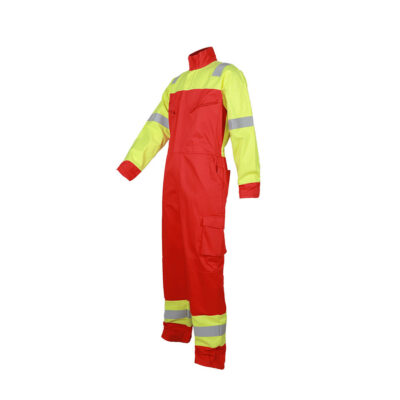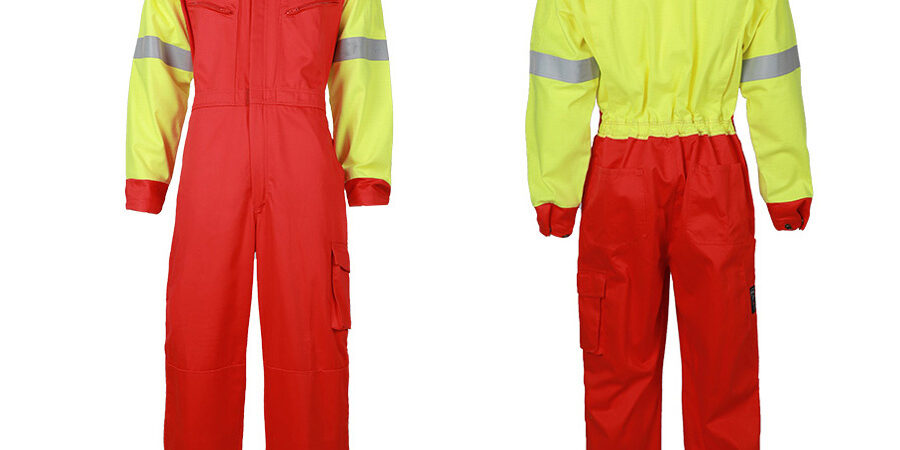Coverall or Two-Piece? Picking the Best Silhouette for the Job
Introduction: Why the Silhouette Decision Matters
When building a uniform program, the choice between a coverall and a two-piece workwear set may seem like a small detail. However, for procurement teams and distributors, this decision can significantly impact worker safety, comfort, maintenance cycles, and total program cost.
Both silhouettes have their strengths, and the right choice often depends on the specific industry, environment, and job function. Let’s break down the differences and provide guidance for B2B buyers making large-scale sourcing decisions.
👷 Coveralls: Full-Body Protection in One Piece
Coveralls, also called overalls, are designed as one continuous garment that covers the torso, arms, and legs.
Advantages of Coveralls:
-
🛡️ Enhanced Protection: No gaps between top and bottom, ideal for industries with exposure to dirt, sparks, or chemicals.
-
👌 Simplified Outfit: Workers only need one garment, reducing coordination complexity.
-
🔄 Consistency: Provides a standardized look for large teams.
Challenges of Coveralls:
-
🔥 Can be warmer in hot climates due to full-body coverage.
-
⏱️ Less convenient for bathroom breaks or quick changes.
-
📦 Bulkier to stock in warehouses compared to separates.
Coveralls are commonly used in oil & gas, construction, automotive workshops, and heavy manufacturing, where protective coverage is a top priority.
👕 Two-Piece Sets: Flexibility and Comfort
Two-piece uniforms typically include a work shirt and matching trousers, often paired with reflective vests or jackets for additional safety.
Advantages of Two-Piece Sets:
-
🌬️ Ventilation: Workers can remove jackets or swap tops depending on climate.
-
⚡ Flexibility: Easier to mix and match for different teams or branding requirements.
-
💰 Cost Efficiency: If one piece is damaged, only the shirt or trousers needs replacement.
Challenges of Two-Piece Sets:
-
👖 Potential for gaps between shirt and pants, reducing protection in high-risk environments.
-
🧼 More pieces to manage in laundry and inventory.
This silhouette is popular in warehousing, logistics, retail uniforms, and light manufacturing, where mobility and cost management are more important than complete coverage.
📊 Direct Comparison: Coveralls vs. Two-Piece Sets
| Feature | Coveralls | Two-Piece Sets |
|---|---|---|
| Protection Level | ⭐⭐⭐⭐⭐ Full body | ⭐⭐⭐ Moderate |
| Comfort in Heat | ⭐⭐ Can feel warm | ⭐⭐⭐⭐ Better airflow |
| Replacement Cost | Higher (whole suit) | Lower (single item) |
| Professional Image | Uniform and consistent | Flexible, mixed styling |
| Industries | Oil & Gas, Construction | Logistics, Retail, Light Industry |
🔑 Strategic Considerations for Buyers
When deciding between coveralls and two-piece uniforms, procurement teams should weigh:
-
Industry Hazards: If exposure to fire, oil, or chemicals is high, coveralls are non-negotiable.
-
Climate: Hot environments may favor breathable two-piece sets.
-
Replacement Cycles: Two-piece sets are easier to manage when only part of the uniform is damaged.
-
Corporate Branding: Coveralls project a highly professional image, while two-piece uniforms allow more flexibility with colors and logos.
🌐 Partnering with Expert Manufacturers
Fabric choice, seam strength, and customization options are just as important as the silhouette itself. Partnering with trusted Workwear Manufacturers ensures your sourcing program covers every detail—from compliance to bulk production efficiency.
For industries that require complete body coverage, collaborate directly with our specialized Coveralls Manufacturers to specify the right designs for your workforce.
Conclusion: A Choice That Impacts Safety and ROI
The silhouette you choose—coverall or two-piece—goes beyond worker appearance. It determines comfort, safety, and long-term procurement efficiency.
🔎 For high-risk environments, coveralls deliver uncompromising protection.
🔎 For flexible, climate-friendly uniforms, two-piece sets often win.
As a procurement leader, making the right call means aligning your sourcing strategy with industry needs, workforce comfort, and overall ROI.





















